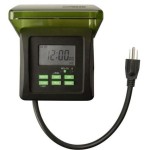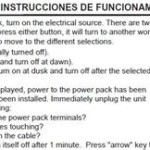Best Outdoor Lights for Brightness: Illuminating Your Outdoor Spaces
When it comes to outdoor lighting, brightness is paramount. Whether you're illuminating pathways, showcasing architectural features, or deterring intruders, the right lighting can transform your outdoor spaces into safe and inviting havens. Here's a comprehensive guide to help you choose the best outdoor lights for brightness:
Types of Outdoor Lights
Not all outdoor lights are created equal. Here are the most common types of outdoor lights and their brightness capabilities:
- Floodlights: Provide intense, wide-angle illumination. Ideal for illuminating large areas like driveways, parking lots, and sports fields.
- Spotlights: Offer a focused beam of light, highlighting specific features like trees, sculptures, or architectural details.
- Path lights: Low-level lights designed to illuminate walkways, steps, and garden paths.
- Security lights: Motion-activated lights that deter intruders by providing a sudden burst of light.
Lumen Output
Lumen is the unit of measurement for brightness. The higher the lumen output, the brighter the light will be. For effective outdoor illumination, aim for lights with a lumen output of at least 700 lumens for floodlights, 300-500 lumens for spotlights, 50-100 lumens for path lights, and 1,000 or more lumens for security lights.
Color Temperature
Color temperature refers to the warmth or coolness of the light emitted. Warm white (2,700-3,000 Kelvin) creates a cozy atmosphere, while cool white (4,000-5,000 Kelvin) provides a more functional and energizing light. For outdoor spaces, consider warm white for ambiance and cool white for task lighting or security applications.
Beam Angle
The beam angle determines the width of the light distribution. Floodlights typically have a wide beam angle (120 degrees or more) for maximum coverage, while spotlights have a narrow beam angle for targeted illumination. Choose the appropriate beam angle based on the size and shape of the area you need to illuminate.
Energy Efficiency
Outdoor lights can consume a significant amount of energy. To minimize energy consumption, opt for LED lights. LEDs are highly energy-efficient and offer a long lifespan compared to traditional incandescent or halogen bulbs.
Motion Activation
Motion-activated lights are a practical solution for security and energy conservation. They automatically turn on when motion is detected, deterring intruders and reducing energy wastage. Consider motion-activated lights for areas like driveways, porches, or backyards.
Additional Considerations:
Apart from the essential aspects discussed above, here are some additional considerations when choosing outdoor lights for brightness:
- Placement: Position lights strategically to ensure optimal coverage and minimize glare.
- Durability: Choose lights rated for outdoor use and made from durable materials like aluminum or stainless steel to withstand weather conditions.
- Maintenance: Consider the ease of replacing bulbs or cleaning lenses to ensure longevity.
- Control: Some lights offer remote control or smart home integration for added convenience.
By following these guidelines, you can select the best outdoor lights for brightness to enhance the functionality, safety, and aesthetics of your outdoor spaces.

The 3 Best Smart Outdoor Lights For Backyards Of 2024 Reviews By Wirecutter

Choose The Best Color Temperature For Your Outdoor Lighting Knowledge Base Super Bright Leds

How Many Lumens Are Needed For Outdoor Lighting The Home Depot

Best Color Temperature For Outdoor Lighting Enhanced

How Many Lumens Outdoor Landscape Lights Need To Work Well

How Many Lumens Are Needed For Outdoor Lighting The Home Depot

How Many Lumens Do You Need For Outdoor Lighting

Best Outdoor Lighting Bulbs Of 2024

Backyard Lighting Ideas

Best Solar Lights On Test In 2024 Bbc Gardeners World
Related Posts







